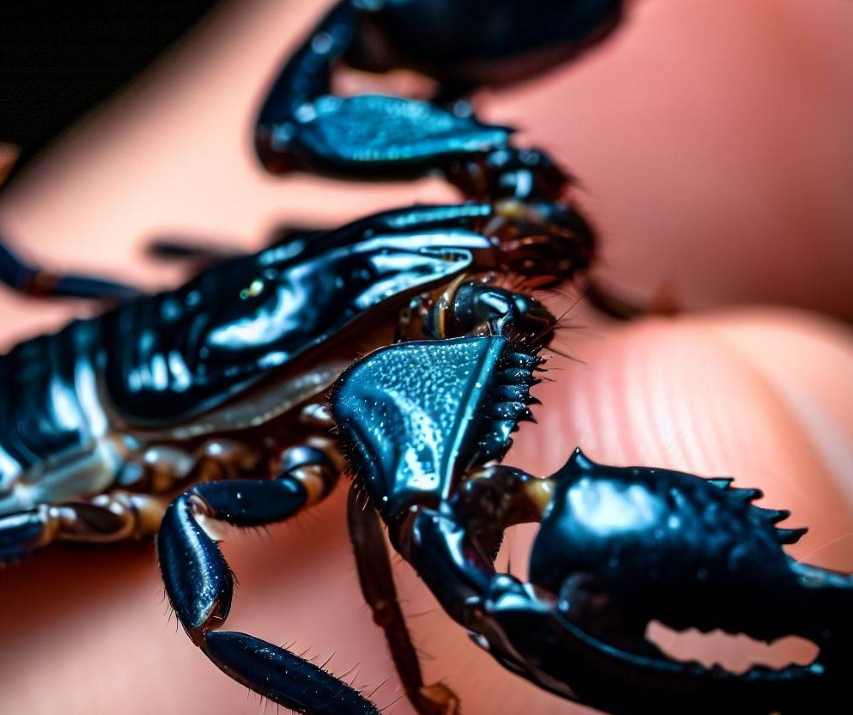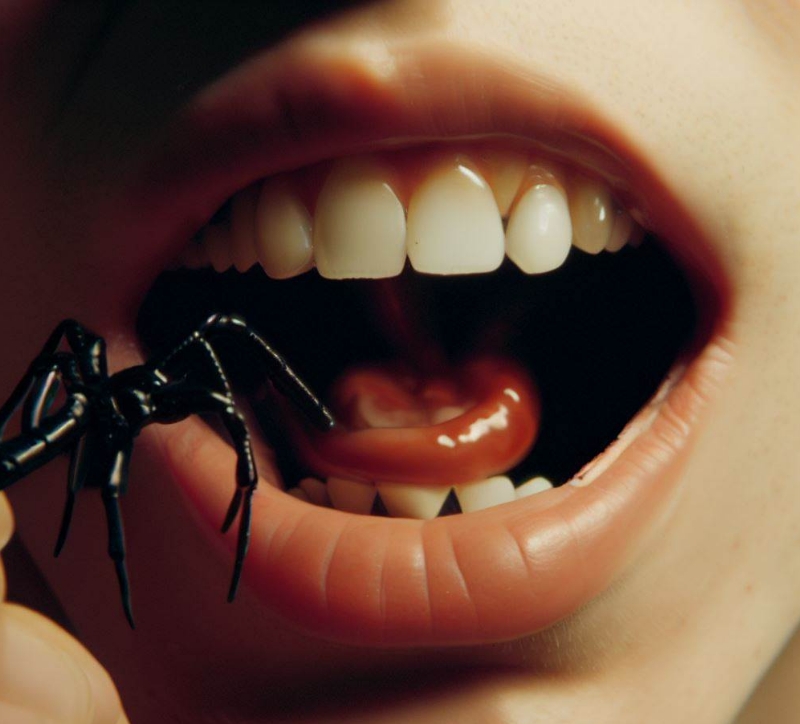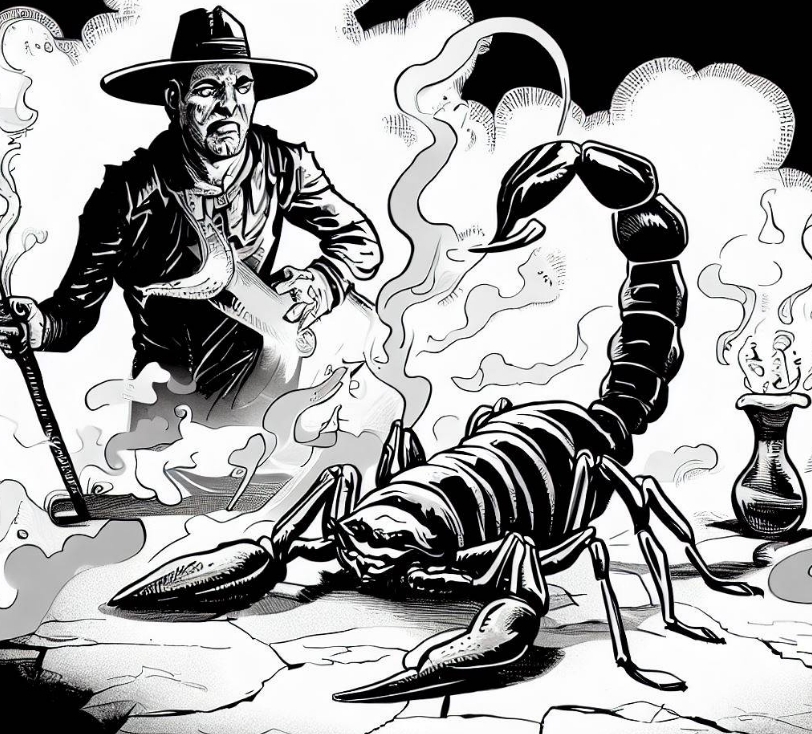Asian Forest Scorpions are a species of scorpion that has captivated hobbyists and researchers alike with their intriguing behaviors and unique adaptations. These captivating creatures are not only fascinating to observe but also make excellent pets for enthusiasts who want to learn more about the world of arachnids. In this comprehensive guide, we will dive into the captivating world of the Asian Forest Scorpion, discussing their natural habitats, behavior, care, and more!
An Introduction to Scorpions
Contents
Before we dive into the specifics of the Asian Forest Scorpion, it’s essential to understand the broader context of scorpions as a whole. Scorpions are part of the class Arachnida, which also includes spiders, mites, and ticks. Contrary to popular belief, scorpions are not insects; they are arachnids, characterized by having two main body parts, eight legs, and a pair of pedipalps.
One fascinating aspect of scorpions is their ability to glow under ultraviolet light, which is due to the presence of fluorescent compounds in their exoskeleton. This unique feature has made them an interesting subject of study for researchers and a popular choice for nocturnal observations.
You might be surprised to learn that scorpions share a common ancestry with lobsters, as both are part of the subphylum Chelicerata. To learn more about this intriguing connection, check out this article on scorpions and lobsters.
Understanding the Asian Forest Scorpion
Natural Habitat and Distribution
The Asian Forest Scorpion, scientifically known as Heterometrus longimanus, is native to the tropical rainforests of Southeast Asia, including countries like Thailand, Vietnam, Cambodia, and Malaysia. These scorpions prefer humid environments with plenty of hiding spots, such as leaf litter and under rocks or logs.
Physical Characteristics
Asian Forest Scorpions are known for their impressive size, with adults reaching up to 4-6 inches in length. They have a dark brown to black coloration, which serves as excellent camouflage in their natural habitat. The scorpion’s large pedipalps, also known as pincers or claws, are used for capturing prey and defense.
Behavior and Adaptations
Asian Forest Scorpions are nocturnal creatures, which means they are most active during the night. This is when they venture out of their hiding spots to hunt for prey. They are equipped with a range of adaptations that make them highly successful predators, including their venomous stinger, sensitive hairs, and powerful pincers.
In addition to their predatory prowess, Asian Forest Scorpions exhibit fascinating behaviors, such as burrowing and even caring for their young. Female scorpions will give birth to live young, known as scorplings, and will protect and care for them until they are mature enough to fend for themselves.
Caring for Asian Forest Scorpions as Pets
Asian Forest Scorpions have become popular pets among arachnid enthusiasts, thanks to their impressive size, captivating behaviors, and relatively low maintenance requirements. If you’re considering bringing one of these fascinating creatures into your home, it’s essential to provide the proper care and environment to ensure their well-being.
Housing
An essential aspect of caring for an Asian Forest Scorpion is providing an appropriate enclosure. A 10-gallon tank with a secure lid is typically sufficient for a single adult scorpion. Ensure that the enclosure has proper ventilation to prevent stagnant air and maintain the humidity levels required by these tropical creatures.
Substrate and Decorations
A 3-4 inch layer of a moisture-retaining substrate, such as coconut fiber or peat moss, should be provided to allow your scorpion to burrow and create hiding spots. You can also include additional hiding places in the form of cork bark, large pieces of wood, or artificial caves. Adding live or artificial plants can also help create a naturalistic environment and maintain humidity levels.
Temperature and Humidity
Maintaining the appropriate temperature and humidity levels is crucial for the well-being of your Asian Forest Scorpion. The ideal temperature range for these scorpions is between 75-85°F, which can be achieved by using a heat mat or ceramic heat emitter. Remember to place the heat source on one side of the enclosure to create a temperature gradient, allowing your scorpion to regulate its body temperature.
Humidity levels should be maintained between 70-80%, which can be achieved by regularly misting the enclosure and providing a shallow water dish. A hygrometer can be used to monitor the humidity levels within the enclosure.
Feeding and Diet
Asian Forest Scorpions are carnivorous and primarily feed on insects, such as crickets, mealworms, and cockroaches. Adult scorpions should be fed 2-3 times per week, while younger scorpions can be fed more frequently. It’s essential to provide appropriately sized prey items to avoid causing injury to your scorpion.
Handling and Safety
While Asian Forest Scorpions are generally not aggressive, it’s essential to handle them with caution and respect. Their venom is relatively mild compared to other scorpion species, and their stings are usually no worse than a bee sting for most people. However, individuals with allergies or sensitivities should be particularly cautious. Use long tongs or forceps to gently interact with your scorpion, avoiding direct handling whenever possible.
Interesting Scorpion Varieties to Explore
If you’re interested in learning more about the diverse world of scorpions, there are plenty of other captivating species to explore. Some examples include the Yellow-Tailed Scorpion, which is the only scorpion species native to the UK, and the intriguing Clear Scorpion, which appears translucent due to its unique exoskeleton.
Conclusion
The world of the Asian Forest Scorpion is a fascinating one, filled with intriguing behaviors, captivating adaptations, and endless opportunities for learning and exploration. Whether you’re an experienced arachnid enthusiast or new to the world of scorpions, these incredible creatures are sure to leave a lasting impression. By understanding their natural history and providing proper care, you can ensure a healthy and enriching environment for your Asian Forest Scorpion to thrive.
Frequently Asked Questions about the Asian Forest Scorpion
1. Are Asian Forest Scorpions dangerous to humans?
While Asian Forest Scorpions do possess venom, their venom is relatively mild and not considered dangerous to humans. A sting from an Asian Forest Scorpion is usually no worse than a bee sting for most people. However, individuals with allergies or sensitivities should exercise caution.
2. How long do Asian Forest Scorpions live?
The average lifespan of an Asian Forest Scorpion is between 6-8 years, with proper care and optimal living conditions. Factors such as diet, enclosure conditions, and overall health can influence their lifespan.
3. How can I tell the sex of my Asian Forest Scorpion?
Sexing an Asian Forest Scorpion can be challenging, but there are some subtle differences between males and females. Males typically have slimmer bodies and longer, more slender pincers (pedipalps) than females. Additionally, males have a more pronounced structure called a pectine, located on the underside of their abdomen.
4. How often should I clean my Asian Forest Scorpion’s enclosure?
A thorough cleaning of your scorpion’s enclosure should be performed every 1-2 months. Spot cleaning, which involves removing any uneaten prey items, waste, or mold, should be done as needed to maintain a clean and healthy environment.
5. Can I house multiple Asian Forest Scorpions together?
It is not recommended to house multiple Asian Forest Scorpions together, as they can be territorial and may fight, leading to injury or death. If you wish to keep multiple scorpions, it’s best to provide separate enclosures for each individual.
6. What should I do if my Asian Forest Scorpion stops eating?
A temporary loss of appetite can be a normal part of your scorpion’s life cycle, particularly during periods of molting or environmental stress. If your scorpion refuses to eat for an extended period, ensure that its enclosure conditions, including temperature and humidity, are within the appropriate range. If your scorpion continues to refuse food and shows signs of distress or ill health, consult a veterinarian experienced in treating arachnids for guidance.
7. How can I tell if my Asian Forest Scorpion is about to molt?
Signs that your Asian Forest Scorpion may be preparing to molt include a decrease in activity, refusal to eat, and a dull or cloudy appearance to their exoskeleton. Molting is a critical period in your scorpion’s life, and it’s essential to ensure that proper temperature and humidity levels are maintained to support a successful molt.




